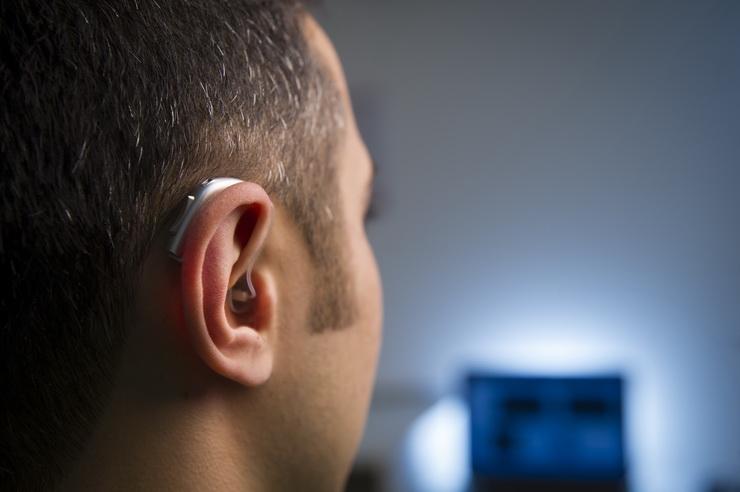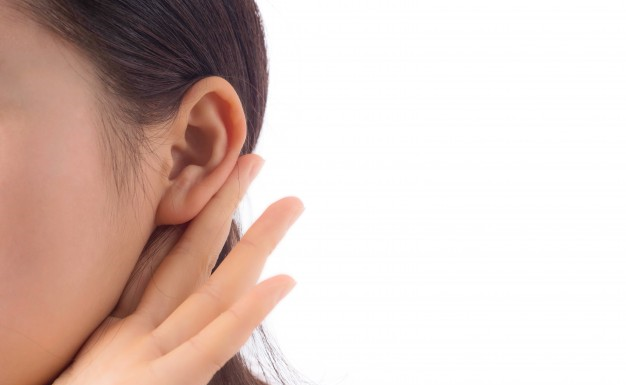Imagine not being able to listen to your favorite song without straining your ears. Or, the sound of a loved one’s laughter. Or the pleasant chirping of birds on a beautiful morning.
Sounds scary, right? Like most things in life, we often take our ears – or rather our hearing for granted. That is until we experience hearing loss. Hearing loss is more common than we’d like to admit and can affect anybody at any time in their life. The risk is in leaving it untreated, for the fear of being ridiculed or becoming a social outcast.
In order to understand hearing loss, it is first necessary to establish the symptoms. The signs of hearing loss vary with the type and degree of hearing loss. Let’s take a look at some of the commonly known symptoms.

Watch Out! Are You Susceptible to Hearing Loss?
The symptoms of hearing loss could be subtle and emerge slowly or could come about suddenly as well. You could be suffering from hearing loss if you…
- Often ask people to repeat themselves.
- Have difficulty following conversations with 2 or more people.
- Think that other people are often mumbling or speaking with a muffled voice.
- Have difficulty hearing in noisy situations, like conferences, restaurants, malls, or crowded meeting rooms.
- Have your TV or radio turned up to a high volume.
- Have ringing/buzzing sounds in your ears.
- Read lips or watch people’s faces more intently trying to understand what they are saying.
- Have a family history of hearing loss.
- Take medications (ototoxic drugs) that can impair hearing.
- Suffer from diabetes, heart circulation or thyroid problems.
- Have been exposed to very loud sounds over a long period or single exposure to explosive noise.
If you can relate to any of the above, you could be suffering from some form of hearing loss. How hearing loss could be treated, depends mainly on identifying the type.
Here are three common types…
3 Common Types Of Hearing Loss
Whether hearing loss can be treated entirely or partially depends on the type of hearing loss you are afflicted with, which could be any of the below.
1. Sensorineural Hearing Loss:
Sensorineural hearing loss, in most cases, is a consequence of the damage caused to the tiny hair cells (sensory receptors) activated by sound waves to vibrate and release chemical messengers that stimulate the auditory nerve. The auditory nerve is made up of many nerve fibers that then carry signals to the brain that are interpreted as sound.
While sensorineural hearing loss usually involves damage to the tiny hair cells, it also can result from damage to the auditory nerve. A sensorineural hearing loss reduces the intensity of sound. It can also distort what is heard – even when the sounds are loud enough.
Some of the potential causes of sensorineural hearing loss include:
- Exposure to loud noise
- Aging
- Medication (Ototoxic drugs)
- Illnesses such as meningitis, measles, certain autoimmune disorders, etc.
- Heredity
- Trauma to the head
- Structural malformation of the inner ear.
Most sensorineural hearing loss cannot be reversed with medical treatment.
However, once any underlying medical conditions have been ruled out or addressed, most people do benefit from the use of hearing aids. In some cases of profound sensorineural deafness, cochlear implants might be the right solution. The decision regarding Cochlear Implants should always be taken under the advice of a trained Cochlear Implant surgeon and Audiologist.

2. Conductive Hearing Loss:
Conductive hearing loss is mechanical in nature – a physical condition or disease could be stopping sound from being conducted from the outer or middle ear to the inner ear, where nerves are stimulated to carry sound to the brain.
Potential causes of conductive hearing loss include:
- Wax buildup
- Fluid in the middle ear due to colds and allergies
- Fluid in the middle ear due to poor eustachian tube function (The eustachian tube drains fluid from the middle ear and ventilates it to regulate air pressure there).
- Ear infection
- A foreign object lodged in the ear
- A ruptured eardrum
- Structural malformation of parts of the ear.
- Trauma to the ear
- Tumours
Medical treatment (medicines or surgery depending on the nature of the problem) of this type of hearing loss often allows for partial or complete improvement in hearing, with hearing aids compensating for any remaining hearing loss.
Hearing Aids would also be a good option for someone not keen on going in for surgery or if the surgeon is not keen on performing the surgery due to the age of the individual.

3. Mixed Hearing Loss:
A combination of sensorineural and conductive hearing loss, this type of hearing loss occurs if there is an issue with the middle or outer ear, in addition to some irreversible hearing loss caused by a problem to the inner ear. While the conductive hearing loss could be treated, hearing aids could be used to help manage the remaining sensorineural hearing loss.

While these are the basic types of hearing loss, there are a few that we encounter on a daily basis, whilst communicating with people close to us. Let’s take a look at these.
Common Causes of Hearing Loss:
Some forms of hearing loss are caused due to old age or owing to prolonged exposure to noise, such as the ones below.
1. Presbycusis:
Presbycusis, in simple words, means age-related hearing loss. It mostly occurs owing to the age-related changes in the ear, as well as to the brain, which can make it more difficult to understand conversations in challenging environments such as a noisy restaurant or in a conversation involving several people. Cardiovascular disease, diabetes, other health conditions common with aging, and ototoxic medications that can damage the inner ear, all can contribute to presbycusis.
2. Noise-induced Hearing Loss:
Noise-induced hearing loss is caused by damage to the delicate hair cells in the inner ear that vibrate in response to sound waves. Just as we can overload an electrical circuit, we can overload these hair cells with too much noise or sounds that are too loud. Although largely preventable, it is a significant societal problem owing to the consistent increase in the noise levels around us.
Technically, any sounds at or above 85 decibels for a prolonged period of time can be unsafe to a person’s hearing (the intensity of sound is measured in decibels). In simpler words, the burst of a single firecracker could be enough to impair a person’s hearing.
People exposed to loud sounds routinely, for example, people working in industrial or aviation workplaces must consider a good pair of earplugs or sound attenuators.
3. Tinnitus:
Often called ‘ringing in the ears’, tinnitus is the perception of a sound in a person’s ears or head that has no external source. Many people with tinnitus experience a ringing, humming, buzzing, or chirping sound. It is believed that overstimulation of the nerves leads to this perception of sound. Often, tinnitus is caused by noise exposure. Tinnitus is almost always accompanied by hearing loss and is considered a symptom of hearing loss. Most people can manage the annoyance associated with tinnitus by using hearing aids.
When you are professionally diagnosed with any type of hearing loss, you are told how significant the hearing loss is – in other words, the ‘degree of hearing loss’ is conveyed. Let’s distinguish between the degrees of hearing loss to get a clear idea.

How Severe Is Your Hearing Loss?
To get some perspective on the degrees of hearing loss, we must first understand sound in terms of decibels. Soft speech is about 50 decibels. The humming of a refrigerator is about 40 decibels; a whisper is about 30 decibels; rustling leaves are about 20 decibels, and the sound of normal breathing is about 10 decibels.
1. Mild
If you have mild hearing loss, you may have some difficulty hearing sounds below 40 decibels. So, you may have minimal or no issues communicating in a quiet environment, in one-on-one settings or with only a couple of people. However, conversations, especially in noisier environments, at a distance, in larger-group settings, or over the phone, will be difficult. For individuals with active professional, social, and civil lifestyles, devoting higher levels of concentration to day-to-day conversations can be draining.
2. Moderate
People with moderate hearing loss have trouble hearing sounds below 40 decibels, and also some sounds in the range of 41-60 decibels. This includes conversations in a quiet office environment as well. Such people need assistive listening devices or hearing aids.
3. Severe
People with severe hearing loss will have trouble hearing sounds below 61 decibels, and some, even in the range of 61-80 decibels – which include sounds of a vacuum cleaner and a dryer. This translates to someone being unable to follow most day-to-day conversations and difficulties in hearing loud speech without amplification devices like hearing aids.
4. Profound
Someone with profound hearing loss can only hear very loud sounds – those above 81 decibels. Such a person would have difficulty hearing and the following conversation even with hearing aids and often rely on lip-reading and/or sign language. Individuals with profound hearing loss may benefit from a cochlear implant, a device that is surgically implanted to substitute for the severely damaged cochlea.
While hearing loss is well-known, the information available is often fraught with inaccuracies and myths. This could be partly owing to the social stigma associated with it – it is perceived as a weakness, especially in a younger person. A person wearing hearing aids is ridiculed. In order to strike at the root of the problem, we must try and debunk some of the myths related to hearing loss.

Myths Related To Hearing Loss: Debunked
Ask anybody about hearing loss, and the first response would be that it only affects ‘old people’. Though, this is not the only misconception people have when it comes to hearing loss. Let’s take a look at some of the common myths.
1. Hearing loss is merely age-related.
Hearing loss affects all age groups, even the ones in school.
2. Just one ear’s down a little. The other one’s fine.
Nearly all patients who believe that they have one “good” ear actually have two “bad” ears. When one ear is slightly better than the other, we learn to favor that ear for the telephone, group conversations, and so forth. It can give the illusion that “the better ear” is normal when it isn’t. Most types of hearing loss affect both ears fairly equally, and about 90% of patients are in need of hearing aids for both ears.
3. Hearing aids will make me look older and handicapped.
Today, there are hearing aids available that fit completely into the ear canal. Besides, an untreated hearing loss is far more obvious than a hearing aid.
4. Hearing aids will make everything sound too loud.
With today’s hearing aids, the circuit works automatically only providing the amount of amplification needed based on the input level.
5. Only people with serious hearing loss need hearing aids.
The need for hearing amplification depends entirely on your lifestyle, your need for a refined hearing and the degree of your hearing loss. If your work involves being part of noisy environments, even a mild or moderate degree of hearing loss can cause severe inconvenience.
With the right medical treatment and correct hearing aids, people with hearing loss can lead a normal life again. Don’t strain yourself anymore! At Centre For Hearing, we provide the most comprehensive diagnostic facilities and the latest technology in hearing aids.
Call us on +91 9811227492 today!



















